|
For the last year, I have had the opportunity to review children’s literature for a website called StoryLinks. The website was established by my monthly writing group, WriteLinks. StoryLinks aims to review children’s literature for 0 to 100 year olds, including picture books, junior fiction, information books, and YA books. StoryLinks recognises the importance children’s literature has in helping young people to grow and learn and wants to champion books for the community.  Image courtesy of Penguin Books Image courtesy of Penguin Books How I got involved? When I was asked if I wanted to read children’s literature and write reviews the answer was YES. I read a lot of children’s literature, so this was my chance to advocate for books and support other children’s authors and illustrators. As a teacher, writer and very cool aunt, I see this important connection in the lives of my primary school students and also encouraging my three nephews to love what they read. I especially loved having the experience of my students thoughts and input when I was reading Mr Bambuckle’s Remarkables Fight Back by Tim Harris aloud to my class and was then asked to review the book. Two of my students loved the book so much that they came dressed as the character Canteen Carol for Book Week in 2018. How is reviewing different to reading? When reviewing books, I need to read these books and think about what makes them work. Some of the questions I may ask are:
Writing the review The review needs to contain many of the things I listed above. In the review I introduce the name of the author, illustrator, book title and what genre of book it is. I give a summary of what the book is about, who the characters are, the problem and some of the main events. I also need to not give the ending away! As a reviewer, I need to include a balanced opinion on how the book handles characters, plot, difficult topics, themes and additional information. I also like to include what type of readers will appreciate the book and titles of books or authors who write in a similar style, so it is helpful for people recommending the book to others or to children. It takes a lot of time to read, think and put all my thoughts down in a cohesive review, but the process doesn’t finish there! After I’ve written the review, I send it to the editor of the website, Mia Macrossan for her final approval and changes. Once this is done, the review is published on the website. Here are the reviews I’ve written for StoryLinks: Emerging ReadersIndependent ReadersYoung Adult
0 Comments
As a writer and booklover, it would seem obvious that libraries are one of my favourite places to visit. There’s a few main reasons:
At the end of last year I went to these three fantastic libraries and loved checking them out. State Library of South Australia I thoroughly enjoyed my time writing in the Mortlock Wing. It felt like a scene out of Harry Potter! Look at all the beautiful old books I was surrounded by! State Library Victoria Check out the stunning La Trobe Reading Room and dome above it. I enjoyed the exhibition on the World of Books. When you’re next travelling somewhere, go check out the libraries and see what treasures you’ll find.
I have the absolute honour of helping one of my dear writing friends, Taryn Bashford, launch the new cover of her upcoming YA novel, titled The Harper Effect. I met Taryn through my SCBWI group and regularly catch up with her at writing conferences. She has been a great support to me and it is fantastic to be able to likewise support her. Here's Taryn to tell us more about her novel and your sneak peak of the new cover! I wrote the very first draft of The Harper Effect over thirty years ago when my 15-year-old brother was playing at Wimbledon and won a scholarship to the Nick Bollettieri Tennis Academy in Florida. At the time, I was training for the Olympics in the 400m track event. Sport was and still is an important part of my life, and even as a teen, I could see how it helped me through the usual teen angsts that we must all survive.
I hope that my novel, The Harper Effect, will do two things for my readers: firstly, be that helping hand, that metaphorical hug that any coming of age story provides, and secondly, represent sporty women as normal, cool, admirable and successful so that teen girls can aspire to a new type of role model. If girls can see themselves represented as strong, powerful and athletic, they will be more likely to participate in sport. Instead of bombarding girls with images of external beauty that they should live up to, let’s bombard them with confident, healthy female role models. To prove the point, those girls who haven’t dropped sport in high school have more positive body images than non-athletes (Sabo & Veliz’s study, Go Out and Play; Youth sport in America). I know that when I’m training – I’m now doing triathlons – I feel strong and fit and confident and this in turn, makes me feel powerful and full of positivity, yet when I’m ill or not training, being physically weaker and less fit affects my self-esteem and my ability to cope with the challenges in life. The Harper Effect shows that through dreaming big, working hard, and believing in yourself, you can achieve anything. Let our teens, both boys and girls, see that women can play sport—they can be confident, they can be winners, they can be star athletes. Let them see their sister or best friend or cousin can be involved in professional women’s sport. Let’s present girls with alternate choices for their future. Let’s empower them and help them find self-realisation. Sport can help girls to BE SOMEBODY. I’m thrilled to finally be revealing the cover for my characters who are dying to get out into the world. So, want to know more about the novel? The Harper Effect is the story of a girl who learns to win from a boy who has lost everything. Harper Hunter doesn't know how it came to this. Her tennis dreams are collapsing; her coach says she doesn't have what it takes to make it in the world of professional tennis. Her new doubles partner is moody, mysterious and angry at the world. What is he hiding? Harper's in love with Jacob, her neighbour, but he is her sister’s boyfriend. Or, he was. Harper could never betray Aria with Jacob ... could she? As her heart and dreams pull her in different directions, she must figure out exactly what she wants. And just how hard she's willing to fight to get it. An excerpt from The Harper Effect: The dining room is where the ghosts and monsters play. That’s what Jacob said when I was five and he was six, necks curling around the half-open door, our eyes blurting fright. On a dare, we’d tiptoe into the room, dash around the table then jump through the French windows into the garden, screaming with delighted terror. Nearly twelve years later, it’s still my least favourite room in the house. Maybe that’s because it’s where the recent pep talks have taken place and the grandfather clock seems to count down the seconds to the end of life as I know it. To pre-order THE HARPER EFFECT: https://www.panmacmillan.com.au/9781760552091/ https://www.booktopia.com.au/search.ep?keywords=the+harper+effect&productType=917504 ABOUT THE AUTHOR Taryn lives the typical writer’s life, with characters from her books insisting they help make dinner. This can be disconcerting as many of them can’t cook. The first draft of The Harper Effect was written when Taryn was 14 years old, and evolved over many drafts to include details from the real life of a professional tennis player and coach, her brother. www.tarynbashford.com
The same wittiness and heart Kate displays in her books comes through when she speaks to her audience. She showed us photos of her childhood and what lead to her becoming a writer. Some of these include:
After her presentation, Kate candidly answered all the questions from the kids and adults in the audience. When it was all over, there was a book signing at the back of the hall. I sat with two other writing friends in the back row with our pre-purchased books so we could get our books signed. (Yes massive fans!) We hadn’t banked on how fast teenage girls run or try to nudge their way into line before you. I wasn’t first, but I was pretty close to the front. My teacher librarian friend asked me to get her books signed. This opened a conversation with Kate about my writing group, what I write and that I was seeking an agent. She simply told me not to give up, to keep writing and that it will happen. She shared that Because of Winn Dixie came out of the slush pile and she picked up her agent afterwards. In a flash of signature and a quick sweet conversation, I felt so encouraged. My favourite part of Raymie Nightingale is the unlikely friendships she has made at her baton twirling lessons. I’ve found the children’s literature community to be filled with kind and supportive people. Kindred spirits who love books as much as you do. Kate DiCamillo is certainly one of those. Thanks for motivating me.
This is my entry into Vivian Kirkfield's #50 Precious Words writing contest. Bert dreamed of flying like the ibises over the lake. He studied their white wings extended to their black tips.
Now 20, Bert lay on an ironing board – his glider’s cockpit. He stared at the wings he’d built and prayed he’d chosen the right bird to teach him to fly. This is my short story entry into Susanna Leonard Hill's Valentiny contest. Enjoy reading the other entries on her website. Daisy’s heart thudded as she saw all the hearts hanging from streamers in the classroom.
“This week we are celebrating Valentine’s Day,” said Miss Lovely. “Tell me what you know.” Valerie raised her hand. “You give a card to your best friend.” “And, it’s a secret,” added Clementine. Miss Lovely clapped. “That’s right. Everyone will make a card for a friend.” After recess, Miss Lovely took the class to the library. Valerie handed Daisy a book. “You’ll love this one.” “Thanks,” said Daisy. She liked horse books too. Valerie whispered, “I can’t wait to make your Valentine’s card.” The librarian shushed them before Daisy could reply. On the bus, Clementine saved a seat for her. “What are you going to decorate your Valentine’s card with?” Daisy held her library book. “I like lace. And you?” “I’m going to use your favorite – glitter,” said Clementine. “Great,” said Daisy. “I thought it’s meant to be secret.” Clementine smiled. “I had to tell you.” At home, Daisy pulled out her craft kit. Who would she give her Valentine to? Valerie and Clementine were both her friends. Instead, Daisy made two cards. On Valentine’s Day, Daisy handed Valerie and Clementine their cards. They read: Valerie + Clementine + Daisy = Valentine’s Dai – a chain of friends. No, I didn’t disappear off the edge of the world in 2016. I have indeed been engaging in social writing activities. Here’s my proof. The blog has suffered in my absence because I’ve been focussed on revising my work. I also moved into a new house and have a fantastic new writing room! I’ve started this year off with a new motivation, writing new material and enjoying my critique group. I’m also participating in Storystorm to generate one new idea for a book each day during the month of January. On day two of Storystorm, the founder, Tara Lazar wrote an amazing post on mindfulness. It’s a hot topic everywhere. Mindfulness is the ability to be here in the present moment. My grade one teacher wrote on my report card, “Rebecca has a tendency to daydream.” After reading Tara’s blog post, I’m embracing this as a positive. For many years I saw this as a negative. While I do get distracted, daydreaming has helped me to dream up wonderful stories to tell. So this year my writing goal is to strike a balance between mindfulness and daydreaming. To help me with this matter, my writing buddy Alison Stegert gave me the most amazing diary for Christmas. I am scheduling in time to daydream while being mindful of important deadlines. Writing makes me happy and when I’m not, I’m deflated. Here are a few other thoughts I've had about mindfulness and daydreaming. Children need time for free play and daydreaming to foster creativity, which helps them excel in many areas of learning. The Labor Party is opposing changes to parallel imports, which would have allowed cheaper titles of the same Australian book to be imported from overseas into Australia. Thankfully, they are mindful of the impact this will have on the Australian publishing industry, ensuring the support of local authors, illustrators, publishers and more importantly, preserving and dreaming about Australian culture in literature. So who is going to join me this year in mindful daydreaming? P.S. If I schedule blog posts into my diary, you should hear more from me this year.
Being a teacher is hard work, but the two things I love most about my job are teaching kids to read and talking about what we’ve read. I’m a huge believer in loving what you read and developing children’s oral language by discussing what you’ve read. So at the end of each year I gift my students with a book to read during summer. One thing I witness in my class year in year out are kids who are what some term ‘reluctant readers’. This can include reasons like students find reading hard, they can’t concentrate for very long, they don’t know what to read and more. When I was a kid, I found reading hard. Thankfully I had a mother who constantly encouraged my reading, despite the fact I didn’t enjoy it for the above reason. She diligently took me the mobile library to borrow books every week and the school library, read homework books with me, helped me with school projects, bought book club at times, surrounded me with books, gave books for gifts and didn’t give up on my love of reading. Unfortunately, my love of reading came late in life when at university I got sick of reading textbooks and I turned to fiction for some welcome relief. I discovered a whole new world and I haven’t turned back, a fully converted book lover, especially of children’s books. Now as a teacher, I want my kids to love what they read from a young age. Yesterday, I found this same sentiment reiterated in a fantastic article called ‘Game Changer for Kids’ in the U on Sunday section of the Sunday Mail (20 December 2015). Here’s its sub-heading: “In a children’s publishing boom, reluctant young readers are being lured to the exciting world of books with the help of their sport heroes.” It really got me here: “I was always wanting to be out there playing sport and not in the classroom,” [Billy Slater] the NRL star says. This is a common scenario in many classrooms around Queensland. I know this all too well. After teaching the middle grades for several years, I have taught many students who are sports crazy, dream of being a pro-athlete, line up quick smart for their weekly Physical Education lesson with their hat (why not mine? :) and live for the lunch breaks playing any game on the oval until they’re red in the face. I often wished they showed similar enthusiasm for the classroom! Some do, but not all. I’d love to spend more afternoons playing sport with them. Unfortunately due to an overly-packed curriculum, it makes it hard to get out and play these games more often, although I dedicate one afternoon a week to this. This is an important side issue. So this article absolutely grabbed my attention for these kids! Where was it earlier in the year? I would’ve used it. The article features Billy Slater and the Billy Slater series about rugby league, Israel Folau and the Izzy Folau series about rugby union, David Warner and the Kaboom Kid series about cricket and Tim Cahill and the Tiny Timmy series about soccer. Each have worked with different authors to bring these series to life.
These are the main takeaway points I got for all kids: - Find books on topics that interest your kids and get them hooked on reading. - The main focus is they enjoy what they read. - It shouldn’t be a chore or feel like homework. - They need to practice to be confident readers. - Reading should be a shared experience between parents and their children together. Talk to your kids about what they are reading and what they like or don’t like about the book. - My personal one: Be a good role model and read books. Talk about the books you are reading and why you like them. These are my favourite quotes from the athletes with my anecdotes included: "If sports heroes can help hook the kids into reading, that’s a great thing.” [Dr Sue Thomson, director of the Australian Council for Educational Research] Well said! Billy Slater: He was thinking outside the box because there was no point getting me read a novel I didn’t really care about.” I love how Billy Slater’s grandfather got him interested in reading. I say to my students I don’t mind what you read, as long as you enjoy it! "Reading is like kicking a football, the more you do it, the better you get. That’s what I say to my little girl who puts herself down with her reading. It’s about building up their confidence and making them interested in what they are doing.” So true! Israel Folau: Books for me in primary school usually meant homework and assignments.” My worst nightmare! David Warner: "As a kid, I was never a reader and now I’m still not a reader, and that’s one thing I wish I could do. I wish I could go back and read a lot of books. I hope kids feel a connection with me as a kid and not mimic me, but learn from it because I regret not paying attention at school. I always found reading hard. I would read one page and then go to the next page and forget what I had read.” No! Don’t let this happen – please! Tim Cahill: I understand as a parent the pressure kids face with sport and school.” They can love both! “I say to my wife that as long as the kids are reading something that’s all that counts. For sure. As a kid I wasn’t a massive reader, but I loved books with pictures and cartoon characters such as animation.” Have you heard about graphic novels? And if you have lasted to end of my very long blog post, well done! This is an important issue to me as a person, educator and writer. One day, I hope a book I publish connects with a child and inspires them to keep reading just like these athletes have. All I can say to these athletes, authors, publishers and other people who’ve gotten involved in these series of books is THANK YOU! I'll keep encouraging my students to be readers. I hope you will as well.
 Karen Tyrrell is a Brisbane based author who writes and self-publishes books about resilience for adults and children. I met Karen through my writing group Write Links. Karen is visiting my blog today. I was interested in finding out from Karen how she imagined her latest book, Jo-Kin Battles the It, a kid’s space adventure. The book follows Josh Atkins (Jo-Kin) and Sam Jones (Sam-Wich) on their first Super Space Kid mission to save the galaxy from a deadly alien called It. Welcome Karen! Karen, you enjoy writing humorous stories. How have you added humour into Jo-Kin Battles the It? I wrote a hilarious story based around the main character, Josh Atkins super geek and his dotty family. Josh throws himself into challenges but they backfire and go wrong. Jo-Kin’s dad is scared of heights, he even gets dizzy combing his hair. Jo-Kin’s silly mum wears a fluffy dressing gown with bits of dog biscuits stuck to it and sings love songs to her dog. I added funny smells, and WHOOSH and KAPOW comic book sounds. Of course, Josh trips over - SPLAT- many times at a critical moment. Which character are you most like in the book and why? I’m most like Josh Atkins, the nerdy science kid. I too was the science geek at school and later as the science school co-ordinator, pale skinned and terrible at sport. Like Josh, I was determined to achieve my dream one day. You have created some fantastic gadgets and inventions in Jo-Kin Battles the It. Did any real life gadgets inventions inspire you? Which is your favourite gadget/invention in the book? Them all. Real life and fantasy gadgets inspired my own creations like:
Jo-Kin is on a great adventure. What is the best adventure you have been on Karen or you want to go on? I’ve explored most continents of the planet. I helicoptered over volcanoes, trekked over glaciers and I have gone helmet diving down into Tahiti’s pacific reef. I really love exploring new destinations at sunrise, inhaling life. I did this after I arrived in Bali, Fiji, Penang, Hong Kong, Paris and Rome. My dream now is to zoom into space aboard the Virgin Starship to explore the final frontier. Thanks Karen. It was great to have you zoom by on your blog tour for Jo-Kin Battles the It. If you enjoyed stopping here, continue visiting Karen on her blog tour and have a chance to win a prize. See below for how.
Jo-Kin Battles the It Blog Tour 19 Oct Dee White writingclassesforkids.com/writing-an-illustrated-novel-with-karen-tyrrell/ 20 Oct Di Bates diannedibates.blogspot.com.au/2015/10/jo-kin-battles-it.html REVIEW 21 Oct Alison Stegert ali-stegert.com/2015/10/21/blog-tour-jo-kin-battles-the-it/ How to Write KIDS Sci-Fi Jackie Hoskingjackiehoskingpio.wordpress.com/2015/10/21/jo-kin-battles-the-it-my-book-journey 22 Oct Georgie Donaghey www.creativekidstales.com.au/whats-new/tours-at-the-tales/1319-jo-kin-battles-the-it-karen-tyrrell 23 Oct Robyn Opie www.robynopie.blogspot.com.au/ Review 25 Oct Rebecca Sheraton www.rebeccasheraton.com/blog Imagine! 26 Oct Sandy Fussell www.sandyfussell.com How to Promote your Book 27 Oct Jill Smith authorjillsmith.wordpress.com/ Review Melissa Wray melissawray.blogspot.com.au 28 Oct June Perkins gumbootspearlz.org Interview 29 Oct Sally Odgers promotemeplease.blogspot.com.au Story behind Jo-Kin! 30 Oct Kate Foster www.katejfoster.com/blog How & Why Sci-Fi? Jo-Kin Battles the It Book Giveaway Win a signed copy of Jo-Kin Battles the It OR one of four eBooks of Jo-Kin Battles the It OR signed artwork from the illustrator, Trevor Salter. For a chance to WIN please like Karen’s Super Space Kids book series page on Facebook www.facebook.com/SuperSpaceKids and Please leave a comment on any of the above Blog stops 19-30 Oct. Winners announced in November. Good luck Where to buy Jo-Kin Battles the It Jo-Kin Battles the It is available direct from the author, from Amazon, LSI, Fishpond and book shops such as Riverbend in Brisbane, Dymocks: Penrith, Carindale, Garden City. Angus & Robertson: Victoria Point & Post Office Square, Mary Ryans Milton. MORE stores coming soon. Hello everyone. I’m back in the blogosphere again. Six months is a long time. I will get back to regular blogging again. Some of my favourite historical fiction writers include Pamela Rushby and Alison Lloyd. As for picture books, I’ve read a lot of biographies lately. One of my writing friends Yvonne Mes has a picture book biography on Sidney Nolan coming out in the Meet series by Random House later this year. These are some of activities I’ve been doing to research for a Junior Fiction novel I’m writing on the Emu War and a picture book on a child living through WWI, called Paddy Vidgen who was the mascot for his brother’s army battalion. Primary Research Go on an excursion For my emu project, I visited an emu farm only 10 minutes down the road from where I live. I got to walk through their pens, watch these unique creatures and learn a stack about them from a very passionate emu farmer. Interview your subject Unfortunately, the emus weren’t very chatty. But my WWI subject was. My State Library interviewed people in Brisbane who grew up during WWI and recorded their experiences. I went to the John Oxley Library at the State Library of Queensland to hear Paddy recollect what it was like growing up in the war era. I even got to use a tape player. The wonderful librarians arranged everything so it would all be there for the day I visited. Read entries from your subject's journal or personal letters they wrote. Watch videos on your subject being interviewed. Interview someone connected to your subject Paddy, sadly has passed away. I have been in email contact with Paddy’s family to ask questions about his life. This is a rare and wonderful experience if someone is willing to let you in and share information about your subject. You glean a personal aspect of your subject’s life and this helps bring them to life for you. Go to an exhibition While at the State Library I dropped in to see the WWI exhibition, Distant Lines. Low and behold, there was a photograph of Paddy Vidgen on a wall in the exhibit. (The below photo is not Paddy Vidgen). I learned many interesting pieces of information about WWI and was moved by the personal accounts of people who lived and served during the war. Secondary Research The internet Wow, the internet has journals to read, videos to watch, images to see and lots of information on websites. You can find out almost anything. People who are passionate about a subject have put up a lot of information for you. Of course, take the information you find with a grain of salt and check its validity and the source who is providing it. Otherwise, have fun seeing what comes up in your search engine results and wading through the information. Save details of your research later so you can always refer back to the website links. Visit your library website The State Library of Queensland and TROVE have an incredible amount of information digitised. I have been able to find old newspaper articles and photographs from both the Emu War and on Paddy Vidgen. Also search your library's catalogue and order books so they are ready to pick up when you next drop in. Visit your library Contact your librarians. They are very helpful people. Librarians at the State Library sent me a very personal email answering my many research questions with links to the relevant information. If you speak to them, they will help you find what you need while you are there too. Library’s often have historical archives. During my time in the John Oxley Library I read two books on the history of two WWI army battalions from Brisbane. Sometimes they allow you to photocopy pages from these precious books. Read I have read many books on these topic areas. I have also read books by other authors who have written similar books to my stories. Soak up what you can and learn from others. History is full of interesting figures waiting to have their story told. I hope these tips help you enjoy the research. Go on, get caught up history.
|








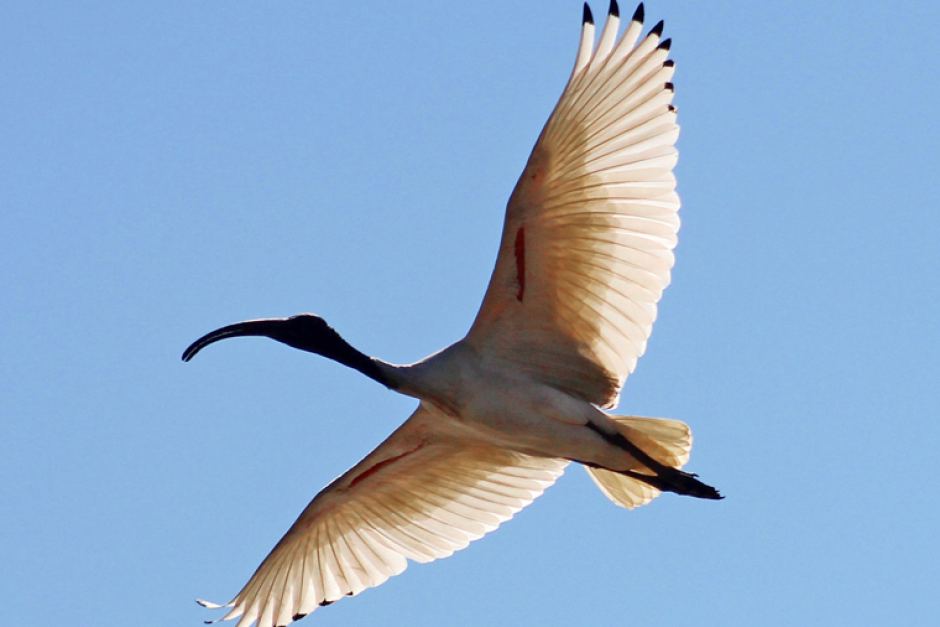






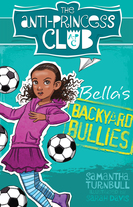

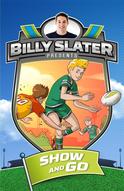

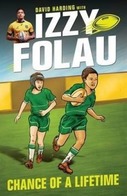
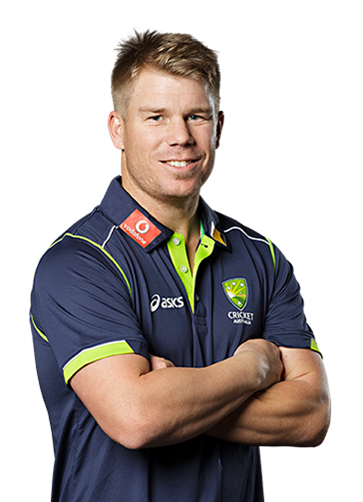






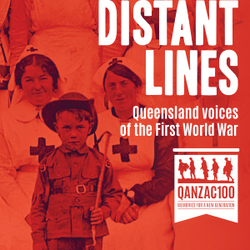
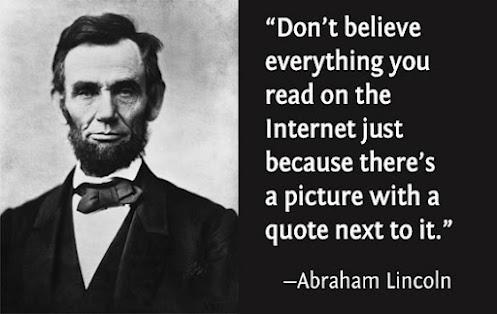










 RSS Feed
RSS Feed
